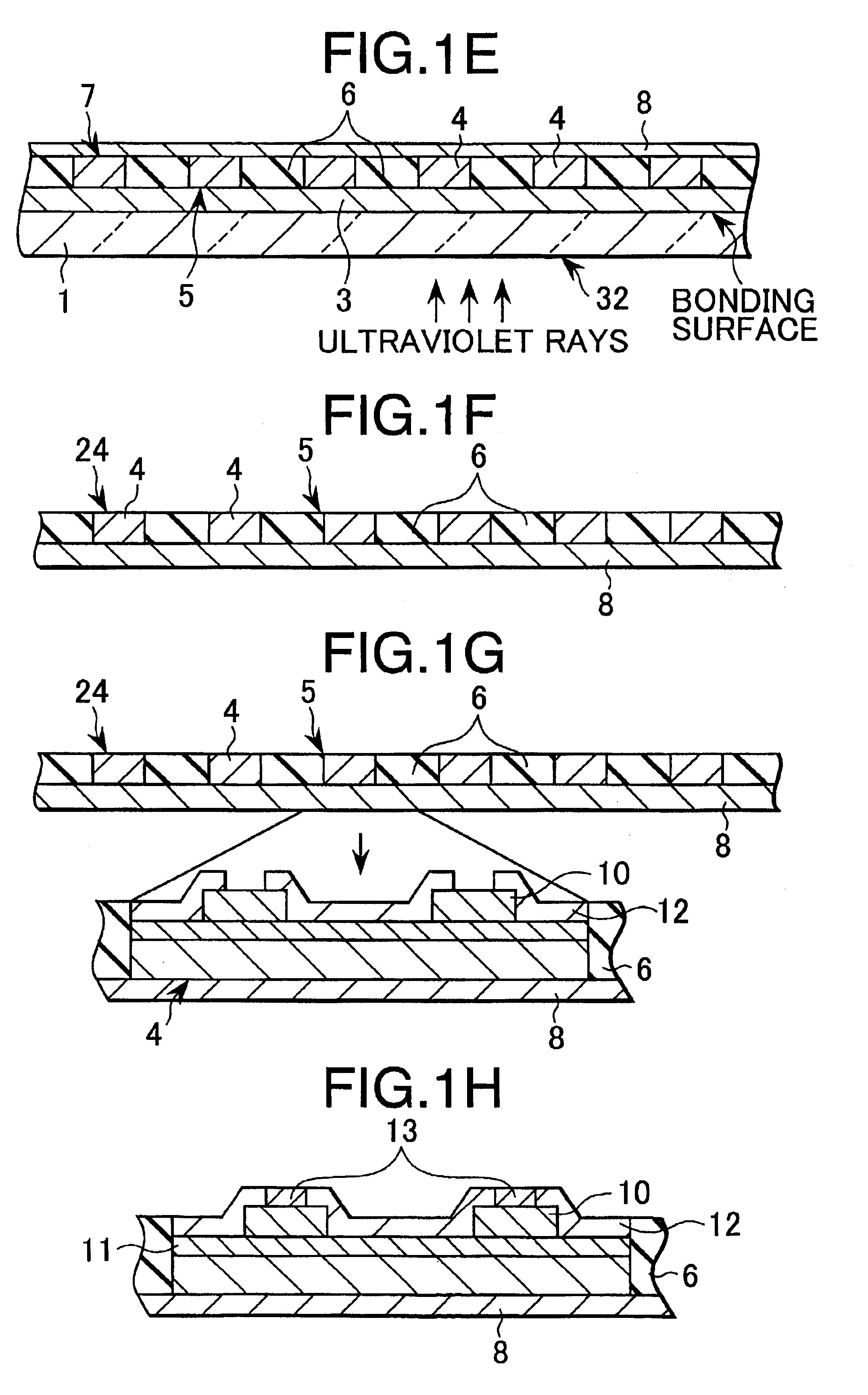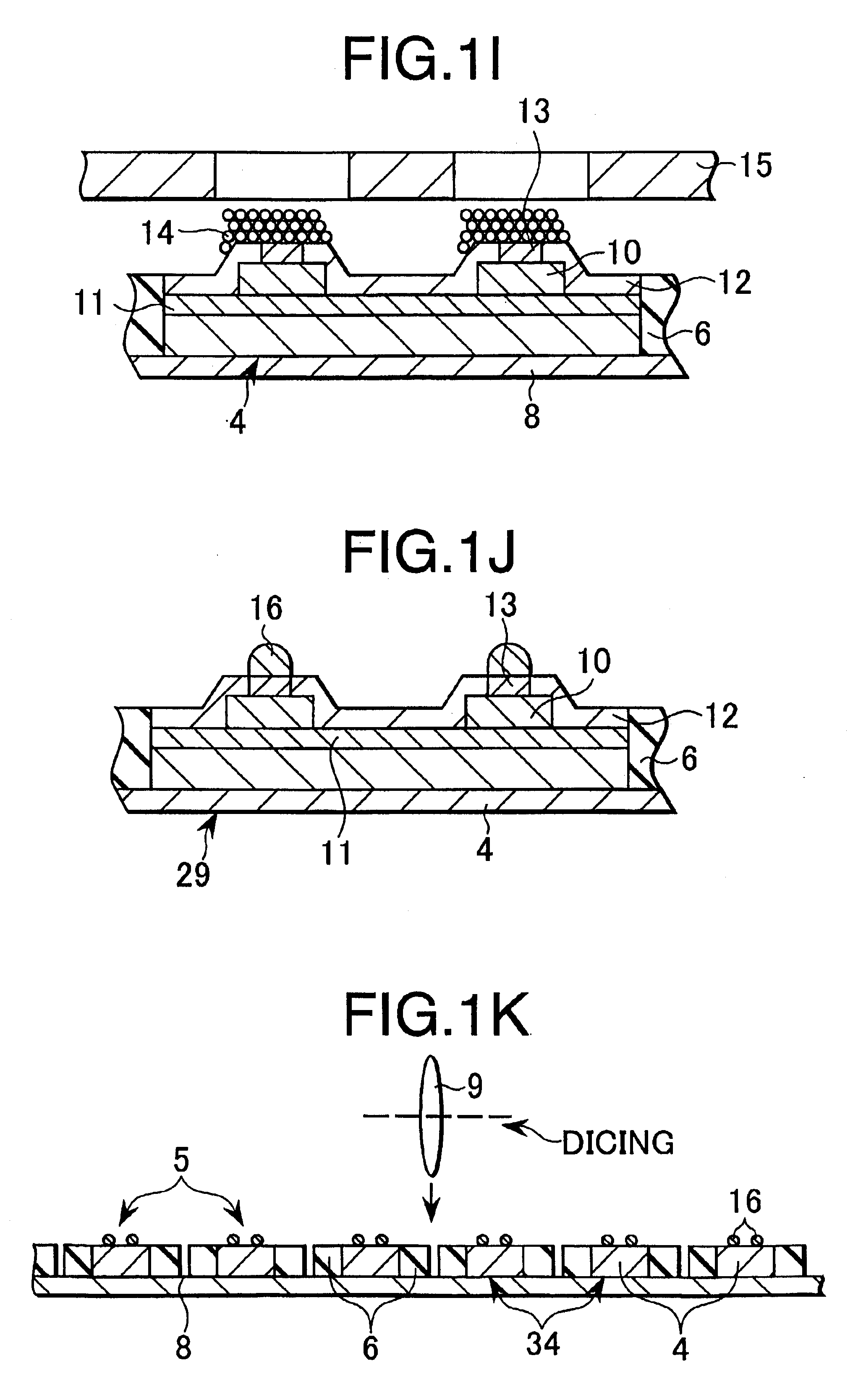Chip-like electronic components, a method of manufacturing the same, a pseudo wafer therefor and a method of manufacturing thereof
a technology of electronic components and manufacturing methods, applied in semiconductor/solid-state device testing/measurement, semiconductor devices, semiconductor/solid-state device details, etc., can solve the problems of increased thickness of stacked packages, easy cracking, and low yield of production resulting from increased processing steps, so as to facilitate handling and reduce thickness , the effect of excellent package reliability
- Summary
- Abstract
- Description
- Claims
- Application Information
AI Technical Summary
Benefits of technology
Problems solved by technology
Method used
Image
Examples
Embodiment Construction
According to the present invention, the above-mentioned protective material is preferably an organic insulating resin or an inorganic insulating material. The semiconductor chip that is diced at the position of the aforementioned protective material and to be fixed on the package substrate (which chip may be a single chip or a plurality of the same or different types of chips integrated using the protective material) preferably has its device surface provided with the electrodes, its side walls covered with the protective material, and solder bumps formed on the electrodes.
Further, preferably, a single or a plurality of the same or the different types of integrated semiconductor chips to be mounted on a packaging substrate are provided by the steps of: pasting the adhesive sheet functioning as the above-mentioned adhesive material, on a flat transparent substrate or the like; fixing the plurality of the same or different types of semiconductor chips all of which are non-defective, o...
PUM
 Login to View More
Login to View More Abstract
Description
Claims
Application Information
 Login to View More
Login to View More - R&D
- Intellectual Property
- Life Sciences
- Materials
- Tech Scout
- Unparalleled Data Quality
- Higher Quality Content
- 60% Fewer Hallucinations
Browse by: Latest US Patents, China's latest patents, Technical Efficacy Thesaurus, Application Domain, Technology Topic, Popular Technical Reports.
© 2025 PatSnap. All rights reserved.Legal|Privacy policy|Modern Slavery Act Transparency Statement|Sitemap|About US| Contact US: help@patsnap.com



